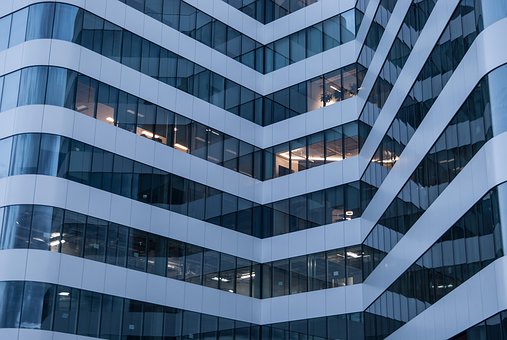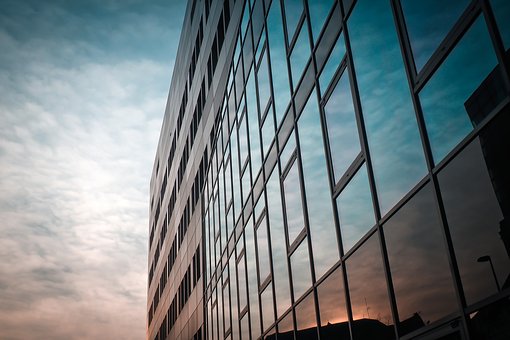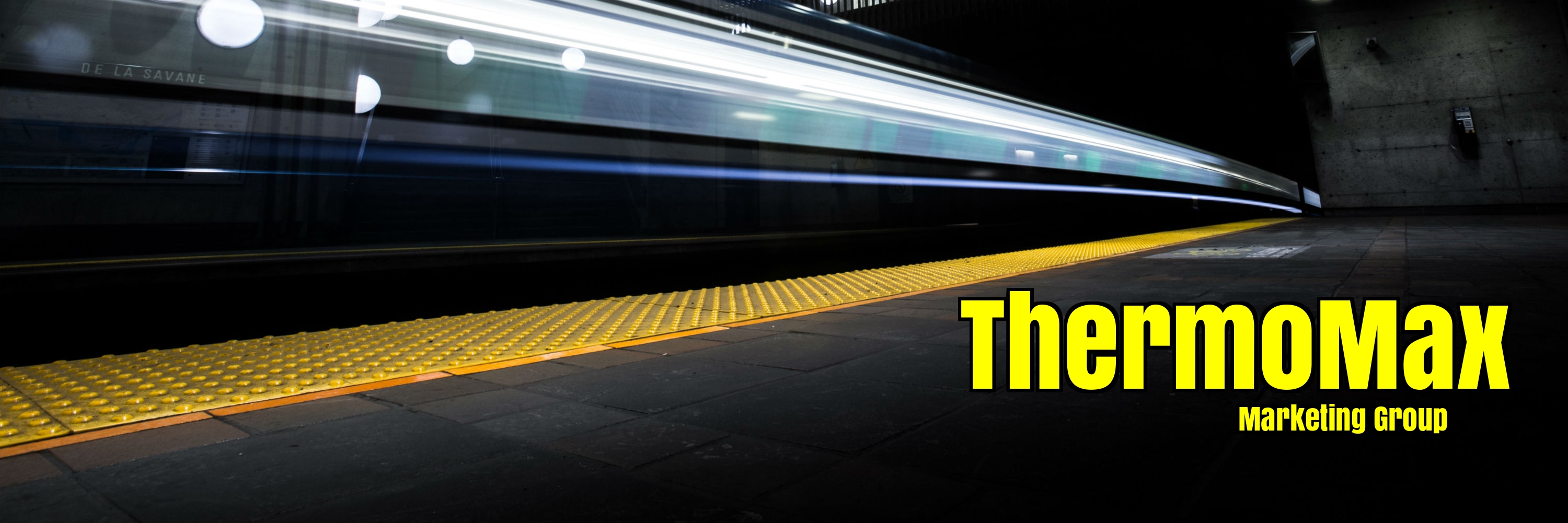High Rise Window Glass Construction
Skyscraper glass is designed to be effective and safe.
This is largely due to the entombed layer covering the glass boards. This buried overlay gives the glass substantial strength and resilience in case there are weaknesses or cracks in the glass plating. Even more, all these layers can be built themselves out of safety glass. When the glass is hardened, it makes the glass so that it will disintegrate into particles instead of dangerous pieces when the whole board is broken. If you’ve been in or seen a car wreck and noticed a bunch of turquoise or teal particles that used to be a window, then you’ve seen what’s known as safety glass. It’s designed to break like that, so the pieces don’t cut, stab, slice, or impale anyone. This is why it’s important to have a high rise window cleaning and glass repair specialist, a phone call away.
High-rise glass is rarely tempered or laminated, but it’s usually heat-strengthened.

Tempered glass might only be used in specific panels, often marked with dots, so fire fighters can know which of them they should break if they have to. In truth, we don’t typically like tempering glass because it puts extra stresses on glass which can alter the optical qualities.
A standard high-rise glazing unit is made up from two pieces of glass, sometimes called lites. They’re usually 0.25 inches or 6 mm in thickness. They are also typically separated by a half an inch of air space to create a 1-inch thick unit. Factory-made using double seals, these will often have desiccated air inside of the units, so they don’t fog up, given how dry the air is. In really cold climates, these spaces might even be filled up with argon.
The glass can be tinted, but it’s more likely lately for it just have a low emissivity coating applied on the inside surface of the exterior piece of glass. This coating will reflect solar heat out and away from its building in order to prevent the structure from gaining heat. The majority of occupied buildings spend a lot more money and energy on their cooling, as compared to their heating. The exception is in very cold cities like Minneapolis and Boston.
In certain cases, glass might be made a bit thicker. Sometimes the pieces are bigger than 5′ by 10′, which is a very common glazing size.
Prior to the fabrication of the window units, they get engineered, and their ability to withstand wind stress is verified. Glass can be really strong, particularly when the pieces are supported fully on each of its four sides, like happens a lot with normal glazing units.
There are a number of exceptions. Glass that’s closer to any floor than 18″ typically has to be laminated or tempered by code. Glass used for railings also has to be laminated or tempered. Glass that is only going to be supported on two of its sides also might need to be engineered as something thicker. Glass longer than 12′ might also need to be sized up.
Be mindful of the fact that residential glass can often be thinner than normal commercial glass. It’s common to say that 6 mm glass is ‘double strength’ since residential glass is usually 3 to 4 mm in thickness, particularly in older homes that have smaller windows.
A window sheet edge is likewise going to be bigger and a lot more grounded in order to withstand the extra wind pressure. As such, skyscraper board casings need to be bolstered with some room for expansion so they can deal with window boards that extend or compress with changes in temperature.

Glass needs to have a number of attributes …
Thermal performance is one of them, which includes shading to keep down solar heat gain but also insulation that retains heat. That’s complex given how it must be balanced with how much light still gets transmitted through said glass.
The majority of glazing units are going to be double glazed at a minimum, and in a number of cases, the space between those panes might get filled with any number of inert gases for the added insulation.
Left to their own, pieces of glass would normally be green in color. If you wouldn’t like to have a green building, then you’d need to choose low-iron glass that has a lot less tint to it.
Thickness determines strength, although light transmittance is also impacted.
Glass is nearly always heat-strengthened. This would normally involve something called heat-soak testing, and interestingly, this is actually a destructive test. The fault being sought out specifically is any nickel sulphide inclusions within the glass that might trigger the glass to shatter spontaneously under duress. If it is able to survive this test, then it is considered safe for use.
At a minimum, glazed units have outer panes that are laminated, meaning that there is a polymer inter layer sandwiched in between the two glass sheets. This gives extra strength and can even retain glass particles if there is a physical failure. Even if glass fractures into a bunch of little cubes, they will probably stick together, although falling from anything more than three stories is still highly dangerous. This inter-layer might be colored for aesthetic reasons or solar controls.





